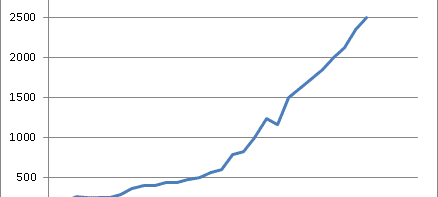Introduction to Intellectual Property in Academia 1.4 – 1.5

1.4 Intellectual property is territorial
As we explore the IP terrain, we should bear in mind the territorial nature of intellectual property rights and the difference in IP protection worldwide. Unable to envelop all of the localities, we shall primarily focus on the United States laws, though we sincerely believe this information would be useful to scientists from all over the world. Local flavor notwithstanding, the most basic statutes are common for all countries.
1.5 University-owned intellectual property
1.5.1. Patents
The existing IP environment in US academia had been largely formed by the Bayh-Dole Act passed by US Congress in 1980 that protects University and National Laboratories intellectual property within USA. Prior to that patenting ocurred on case-to-case basis. Figure 1 shows rapid growth of granted patents since acceptance of Bayh-Dole Act: from less than 250 patents granted in 1975 to over 3,000 patents granted in 2000 [4]. Publicly funded biomedical research accounts for a lion share of the university patents.

Fig. 1 A rapid growth of the University and National Lab’s IP after Bahl-Dole Act of 1980.
Despite this rapid growth, the share of university patents relative to the total domestic patents has remained relatively small as it has grown from 0.16% in 1980 to about 4% in 2000. Despite the relatively small number of patents, they have lead to the creation of 7,000 new businesses based on the research conducted at U.S. universities [5].
The specifics of university patents is that despite their greater generality and importance than industrial patents, university patents cover early-stage research that is far from being ready for commercial use [6]. Therefore, a company that purchases or licenses a university patent assumes additional risk compared to industrial licensing.
1.5.2. Copyrights
Most often, the copyright issue arises when a scientist creates a “work” (tangible or intangible) while being an employee, acting within the scope of the employment. The work then falls under the broad category of “work made for hire.” In that event, the copyright owner is the employer. For example, if you are a university employee, and your job is to create software code, the copyright most probably belongs to your university. Another time when the issue of using copyright comes up in the academic setting concerns scientific papers. The authors are frequently asked to transfer copyrights in our books and articles to publishers.
Finally, when a university employee uses somebody else’s results for teaching or in theoretical or experimental research, it may sometimes require permission from the copyright owner. Those and other issues are covered in Chapter 9.



